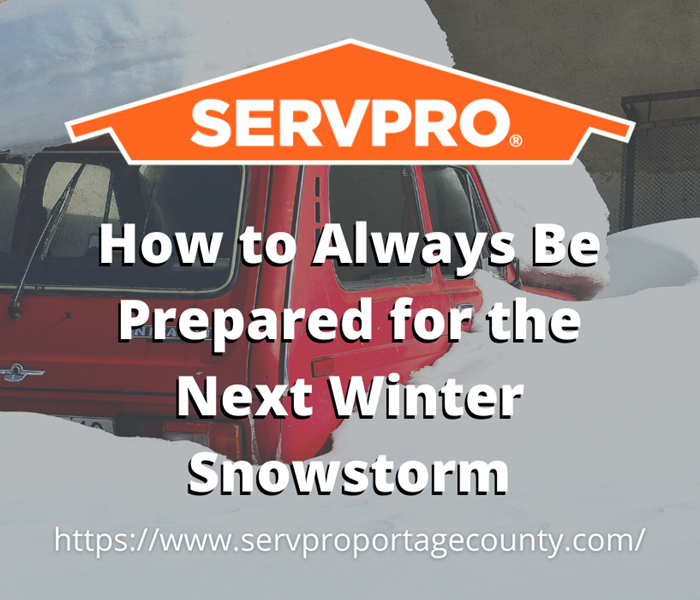How to Always Be Prepared for the Next Winter Snowstorm
2/2/2022 (Permalink)
The North American winter storm of 2021 and the Texas power crisis showed us that we need to be ready for any kind of weather anomaly. Even in April, it’s important to be prepared for the next winter snowstorm.
Here are some tips to keep you and your family safe when winter gives us its worst.
Know winter storm watch terms
- Winter storm watch -- Current conditions are favorable for hazardous winter weather within 48 hours. It’s not certain, but it’s possible.
- Winter weather advisory -- There is either freezing rain or 2 to 4 inches of snow that could cause inconveniences.
- Winter storm warning -- Life-threatening winter weather is expected. It could include 5 or more inches of snow in 12 hours; more than 7 inches of snow in 24 hours; extreme ice accumulation that could damage trees and powerlines; or a combination of snow, ice, and wind.
Prepare ahead of time
- Stock up on essential items: flashlights, snow shovels, rock salt, first aid kits, batteries, blankets, emergency radio.
- Inspect your chimney, roof, and gutters.
- Invest in a generator in case of power outages.
- Weatherize your doors and windows.
- Make sure your home is adequately insulated.
- Check pipes to prevent freezing.
- Inspect your smoke and carbon monoxide detectors.
- Winterize your car and fill your gas tank. (Do not drive during a snowstorm unless there is an emergency.)
- Charge all phones and electronic devices.
- Stock your pantry with nonperishable foods and water.
During a snowstorm
- Dress in warm, waterproof clothes.
- Stay inside and turn the heat up, in case of a power outage.
- Stay hydrated.
- Run a slow and steady drip of water to prevent pipes from freezing and bursting, if they aren’t insulated.
After a snowstorm
- Stay tuned to the local weather stations.
- Avoid driving until weather and road conditions improve.
- Shovel snow safely. Know your limits and don’t overdo them.
- Sprinkle rock salt, sand, or kitty litter to create traction on slippery surfaces.
Follow these tips, and you’ll avoid many of the most common dangers posed by snowstorms.






 24/7 Emergency Service
24/7 Emergency Service
